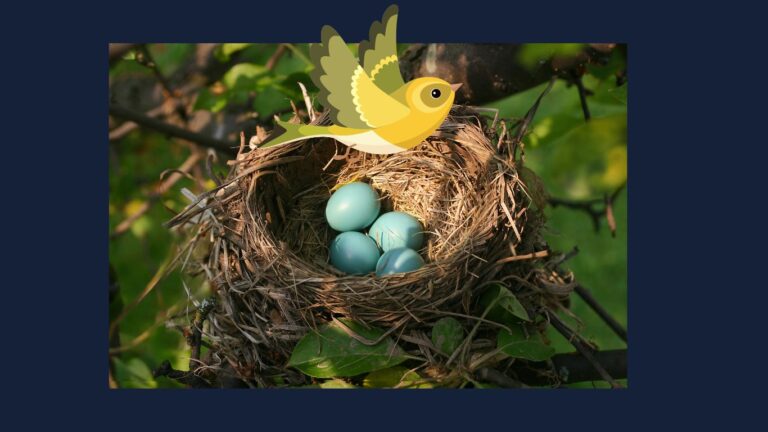How I Transformed My Roses Into Show-Stopping Blooms
Nothing stops visitors in their tracks like the sight of large, healthy rose blooms.
Roses with full petals and rich color can transform an ordinary garden into a showpiece. Yet many gardeners struggle with small buds, weak blooms, or flowers that never fully open.
I faced these same challenges when I started growing roses in my backyard in Virginia.
I expected them to look like the ones in garden magazines, but my first year gave me small, underwhelming flowers.
I learned that roses need more than just planting and watering. They require the right care, consistent feeding, and a supportive environment to thrive.
When I began adjusting my approach, the results were immediate: my blooms grew larger, lasted longer, and carried stronger fragrance.
Choose the Right Rose Varieties
The first step to bigger blooms starts with variety selection. Not every rose produces large flowers. Hybrid teas, for instance, are famous for their long stems and large single blooms, making them perfect for cutting gardens and floral displays. Floribundas, while known for producing clusters, can also create impressively sized flowers with proper feeding. English roses, bred by David Austin, combine old-world fragrance with generous bloom size, making them a reliable choice for home gardeners.
When I planted my first hybrid tea rose, the difference was obvious. Even before I perfected my care routine, the buds swelled larger than any of my older rose bushes. This confirmed for me that genetics matter. If your goal is bigger flowers, start with roses bred for size.
Disease resistance also plays a major role. A plant battling black spot or powdery mildew will never put full energy into bloom production. Healthy foliage means stronger photosynthesis, which translates into more nutrients directed toward the flowers. I learned this lesson after replacing a disease-prone variety with a resistant English rose. Not only did the new plant require less spraying, but its blooms also doubled in fullness compared to the sickly rose I had before.
Choosing the right varieties sets a strong foundation. From there, proper pruning, soil nutrition, and regular watering will unlock the full potential of your roses.
Soil Preparation and Nutrition
Bigger rose blooms start from the ground up. Early on, I learned that roses are heavy feeders and demand rich, well-prepared soil. The first time I planted roses in my clay-heavy backyard, they struggled. The soil held too much water and lacked the structure that roots need. After some trial and error, I discovered that amending the soil with compost, aged manure, and peat moss improved drainage and added valuable organic matter. From that point forward, the roots grew stronger, and the plants rewarded me with more vigorous blooms.
A balanced fertilizer program makes the difference between an average rose and one that produces full, show-stopping flowers. Roses need nitrogen for healthy foliage, phosphorus for root and bloom development, and potassium for overall vigor.
I started using a rose-specific fertilizer blend, and I noticed that the blooms not only increased in size but also developed richer color. Feeding every four to six weeks during the growing season keeps the plants steadily supplied. Skipping feedings in midsummer once left my roses looking weak, so I never miss the schedule now. Regular nutrition is truly the secret to consistent bloom quality.
Watering Techniques
Water is another critical factor that directly impacts bloom size. Early in my gardening journey, I often gave roses a quick sprinkle, thinking it was enough. The result was shallow roots and small flowers. I later learned that roses respond best to deep watering at the base, which encourages roots to reach down into the soil. I now water slowly and deeply two to three times a week, especially during hot spells.
Avoiding overhead watering is equally important. I once lost an entire flush of blooms to black spot after repeatedly spraying water over the leaves in summer. Since then, I always water directly at the base. This method keeps the foliage dry and helps prevent fungal disease.
To maintain consistent soil moisture, I mulch my rose beds with shredded bark or straw. Mulching not only conserves water but also regulates soil temperature and reduces weed competition. In my experience, a two- to three-inch layer of mulch keeps the soil cool and moist, which creates the perfect environment for strong roots and, ultimately, larger blooms.
Pruning for Bigger Blooms
Pruning can feel intimidating at first, but it is one of the most effective ways to encourage larger roses. When I neglected pruning my first few seasons, my bushes became tangled, and the flowers stayed small. Once I began removing dead, weak, or crossing stems, the plant directed more energy to healthy canes. This shift alone improved the size and health of my flowers.
Deadheading, or removing faded blooms, is another step I never skip. By cutting away spent flowers, the plant redirects energy into producing new buds instead of forming seeds. After adopting this habit, I saw more frequent flushes of larger blooms throughout the season.
Shaping the bush through pruning also pays off. I cut the plant to an open, vase-like form that allows air circulation and sunlight to reach all parts of the plant. Finally, I reduce the number of buds on each stem, which encourages the plant to channel its energy into fewer but bigger flowers.
| Care Factor | What to Do | Why It Matters | Personal Tip |
|---|---|---|---|
| Variety Selection | Choose hybrid teas, floribundas, or English roses; select disease-resistant types | Genetics determine bloom size and plant health | My hybrid tea roses always produced bigger buds right away |
| Soil & Nutrition | Use well-draining soil enriched with compost; feed every 4–6 weeks with balanced fertilizer | Provides steady nutrients for growth and bloom production | Adding aged manure gave me the richest blooms |
| Watering | Deep water at base, 2–3 times per week; avoid overhead watering | Encourages deep roots and prevents fungal issues | Mulch helps me keep soil moist during heat waves |
| Pruning | Remove weak stems, deadhead faded flowers, shape into open vase form | Directs energy to stronger buds for larger blooms | Cutting down to outward-facing buds improved airflow |
| Sunlight | 6–8 hours of direct sunlight daily; proper spacing for air circulation | Boosts bloom quality and prevents disease | Moving roses from shade doubled my bloom size |
| Pest/Disease Care | Neem oil, insecticidal soap, encourage ladybugs; remove diseased leaves | Protects energy reserves for bloom growth | Ladybugs wiped out my aphid problem in one season |
| Extra Boosts | Use Epsom salt for magnesium; thin buds; stake heavy flowers | Enhances bloom size and prevents stem damage | Pinching off extra buds gave me show-quality roses |
| Seasonal Care | Spring: prune, feed, mulch. Summer: water, deadhead, pest control. Fall/Winter: reduce stress, protect roots | Syncs plant care with natural cycles | Mounding soil in winter saved my bushes from frost damage |
Sunlight and Air Circulation
Roses thrive in full sun, and this is non-negotiable if you want large, vibrant blooms. When I first planted roses along a shaded fence line, they struggled. The flowers were small, the color was dull, and the plants were prone to mildew. The turning point came when I moved them to a sunnier spot in my yard. Once they received six to eight hours of direct sunlight every day, the difference was dramatic. The petals opened wider, the colors deepened, and the fragrance intensified.
Air circulation is just as important. I once made the mistake of planting my bushes too close together, and the overcrowding trapped moisture around the foliage. Diseases like black spot spread quickly, and my blooms suffered. Now I space each rose at least three feet apart, depending on the variety, to allow air to flow freely. This simple adjustment reduced disease issues and gave me healthier plants that put more energy into producing bigger flowers.
Pest and Disease Management
Pests and diseases can rob your roses of the energy they need to create beautiful blooms. Early in my rose journey, I battled aphids that clustered on new buds. The tiny insects weakened the flowers and left them misshapen. I solved the problem by spraying neem oil every couple of weeks and encouraging natural predators like ladybugs. Once I found that balance, the buds grew normally and opened into full, healthy roses.
Fungal diseases are another common threat. Black spot and powdery mildew once took hold of my plants when I watered carelessly and allowed wet foliage to sit overnight. These diseases drained the plants and reduced bloom size. I now use preventive care: proper spacing, watering at the base, and removing infected leaves before they spread the problem. In some cases, I also apply a light coating of fungicidal soap. Keeping the plants clean and healthy ensures that more of their strength goes into flowers instead of fighting off disease.
Healthy roses resist problems better than weak ones. When I keep the plants well-fed and stress-free, pests and disease have a harder time gaining control. This proactive approach makes a clear difference in bloom size and quality.
Extra Bloom-Boosting Tips
Beyond the basics, I have learned a few tricks that push roses to produce larger blooms. One of my favorites is using Epsom salt. Sprinkling a tablespoon around the base of each plant in spring and again midseason provides magnesium, which roses need for strong growth and flower production. I first tried this on a struggling bush, and within weeks, the leaves deepened in color and the blooms swelled noticeably larger.
Strategic thinning also works wonders. By pinching off some of the developing buds on a single stem, I encourage the plant to focus its energy on fewer flowers. The result is fewer overall blooms, but each one is larger and more impressive. I often use this method on hybrid teas when I want perfect showcase roses.
Finally, heavy blooms sometimes need support. I have had roses bend or even snap under the weight of oversized flowers. Using small stakes or plant supports protects both the blooms and the stems. This not only preserves the flowers but also prevents damage that could set back future growth.
With these extra steps, my roses consistently deliver the kind of lush, eye-catching blooms I once only admired in public gardens.
Frequently Asked Questions
1. How often should I fertilize roses for bigger blooms?
I fertilize every four to six weeks during the growing season. Skipping feedings often results in smaller, weaker flowers. A rose-specific fertilizer with nitrogen, phosphorus, and potassium works best.
2. Can I use household items like coffee grounds or banana peels for roses?
Yes, but use them as supplements, not replacements. Coffee grounds add nitrogen, while banana peels provide potassium. I mix them into compost instead of applying directly to the soil to avoid pests.
3. Why are my rose blooms small even though I water regularly?
The problem may be soil nutrition or overcrowding. Roses need deep, consistent watering at the roots, plus balanced feeding. If your bushes are too close together, air circulation suffers, and the plants focus on survival instead of blooms.
4. Is Epsom salt really effective for bigger blooms?
In my experience, yes. Magnesium from Epsom salt helps with chlorophyll production and stronger growth. I sprinkle a tablespoon at the base of each bush in spring and midsummer. My roses respond with greener foliage and larger flowers.
5. Should I prune in summer or only in spring?
Major pruning should be done in spring, but I always prune lightly in summer by deadheading and removing weak stems. This keeps energy flowing to strong blooms instead of wasted on fading flowers.
6. How can I protect roses during harsh winters?
I mound soil and mulch around the base of each bush and sometimes wrap the canes in burlap. Once I started winter protection, my roses came back stronger and bloomed bigger the following season
Seasonal Care
Roses respond differently through the year, and I learned the hard way that timing matters as much as technique. Giving the right care in each season ensures the plants stay strong and ready to deliver bigger blooms.
Spring is when the real work begins. Every March, as soon as the threat of frost passes here in Virginia, I carry out major pruning. I remove dead wood, cut back weak canes, and shape each bush into an open form. This step sets the foundation for healthy growth and allows sunlight to reach every branch. Right after pruning, I feed the roses with a balanced fertilizer and add a fresh layer of mulch. Mulching not only locks in moisture but also discourages weeds and stabilizes soil temperature. When I first adopted this spring routine, the difference was striking: by early summer, my plants were bursting with larger buds.
Summer brings both rewards and challenges. Roses are in full bloom, but the heat and insects can stress them. I keep to a consistent watering schedule, giving deep soaks at the base of each plant two to three times a week. This prevents the shallow roots that once left my roses weak in midsummer. Pest control also becomes a top priority. Aphids and Japanese beetles often show up, and if left unchecked, they sap energy from the blooms. I manage them with neem oil and occasional hand-picking. Deadheading faded flowers keeps the bushes in continuous production, pushing them to deliver more buds. In my experience, summer is the season where diligence pays off daily. Skipping just a week of care can result in smaller, weaker flowers.
Fall and Winter are about preparation and protection. In fall, I reduce feeding to allow the plants to slow down naturally. I continue deadheading but stop heavy pruning so the roses can conserve strength for dormancy. As frost approaches, I mound soil or mulch around the base of each bush to shield the roots. During my first winters as a gardener, I ignored this step and lost entire plants to freezing temperatures. Once I started protecting them properly, the roses emerged in spring healthier and more vigorous, ready to produce larger blooms.
By respecting the seasonal rhythm, I have seen my roses improve year after year. The cycle of pruning, feeding, protecting, and resting makes a noticeable difference in bloom size and longevity.
Conclusion
Bigger rose blooms are not the result of luck but of balanced, consistent care. Choosing the right variety, preparing healthy soil, pruning thoughtfully, and protecting the plants through each season all add up to remarkable flowers. My own roses were once small and disappointing, but with patience and steady adjustments, they now rival the blooms I once admired in public gardens.
I encourage every gardener to experiment with feeding schedules and pruning methods to see what works best in their climate. Roses are resilient, and they often reward even small improvements with better growth. The key is to focus on plant health first. A strong, well-fed, well-protected rose always produces the largest and most beautiful flowers.
If you have your own rose-growing tips or challenges, I would love to hear them. Sharing experiences helps all of us grow better gardens and enjoy the kind of roses that make people stop and take notice.







